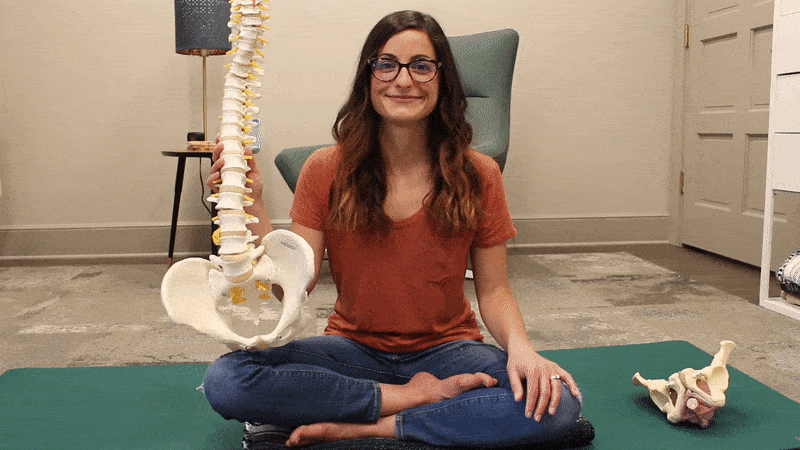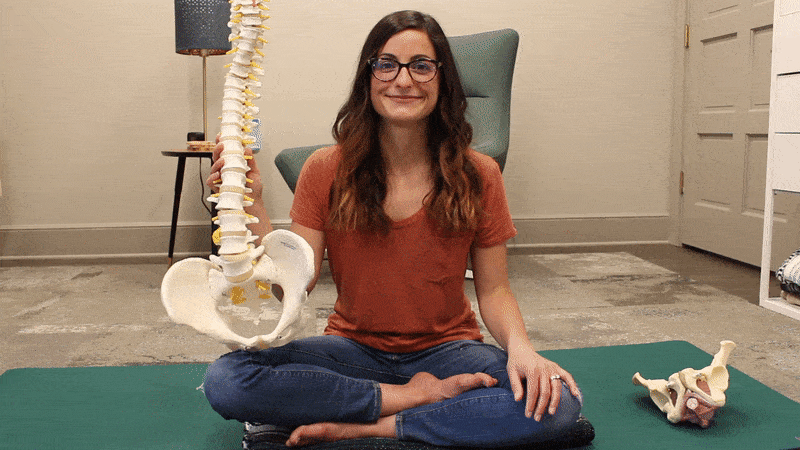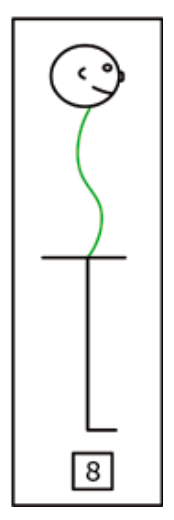🦀 Issue 57 - Can you draw a spinal curve? Prove it.

Have you ever searched for physical therapy on Giphy? I don’t recommend it unless you’re looking for an ironic laugh. It’s not a happy place. BUT I did find one that fits what we’ve got today, it’s about spinal shape from Dr. Susie G, a pelvic health PT. She’s got some cool content out there and is sittin’ here demonstrating what a spine actually looks like. Too bad the people in our first study never saw her content.

Would you like an audio version of this with double the articles that still reads in under 10 minutes? I thought so. You’ll have to become a King Crab supporter for that. It’s free for the first month and just $12 per month thereafter. That’s just $3 per week, or 75 cents per article. A steal! Also, you’d be supporting what I do at PT Crab and that’s invaluable. Subscribe here. Thanks!
Also-also - can’t afford it? Sign up for our referral program that would pay you for referring people to PT Crab. Details on that soon.
With that, let’s dive in!
Quick! Draw the curvature of the spine from a sagittal view.
The Gist - Don’t worry, I’ll wait. Did you do it? Without cheating?

Does it look like this?
Congratulations! You bettered 70% of the general population and 37% of healthcare providers. Good on ya! That’s what this first study was about, whether regular people could draw the curvature of the spine correctly. You won’t be surprised to hear that they can’t, but you may be surprised to know just how poorly they did. 70% of people drew an incorrect shape and even fewer selected it from a collection of drawings, just 21% could do that. Those are pretty low levels of body literacy. As a pre-test, the researchers also asked healthcare providers to perform the activity and they didn’t do too well either. Just 63% of them drew correctly. Ouch.
Tell Me More - The way the study was designed, more weight was given to correctly drawing the lumbar lordosis than getting the cervical and thoracic portions right, so people possibly did even worse than how they were represented. The goal of the study was to develop and evaluate a reliable measure of sagittal spine literacy since so many people have spinal pain and good posture is important to improving it. Understanding what the spine looks like and what it’s doing is important to being a healthy owner of one. Unsurprisingly, the participants in the study who were better at drawing the spine also had less spinal pain. If you don’t educate on this in your clinic already, ensure that you do from now on.
Paper? Sure thing. Open access here.
Nutrition is in your scope
The Gist - Bringing you yet another perspective piece from PTJ, this one about nutrition in PT practice. It turns out, nutrition screening, general health and well-being screening, malnutrition identification, and more are in a PT’s scope. I know that getting an automatic BMI on every patient and “providing weight-loss advice” are not super useful to most PTs, but this piece argues that you should pay more attention to nutrition. It also gives you tools, checklists, and protocols to make the nutrition screening and advice process as easy as possible. It also-also is careful to point out what is within a PT’s scope (education and monitoring about diet and exercise, behavioral change techniques, and motivational interviewing) and what is not (diet plans and interventions to treat a medical diagnosis). It is totally in your scope to recommend healthy eating and specifics on how to do it, and the paper helps you do so.
Tell Me More - Outside of asking you to skim yet another paper (sorry, but they’re all really good this week!), I’ll just throw in a couple more notes from this one.
Patients and clients are likely to be confused, overwhelmed, and generally uninformed due to the barrage of nutrition and diet information to which they are regularly exposed. An important role for physical therapists is to provide reliable, accurate, evidence-based information and information sources. For example, for a patient who is not ready to change their behavior or who is not convinced of the benefits of eating healthier, physical therapists can provide education to eat more home-cooked meals, given evidence that eating at home more than 3 times a week has been shown to be a strong indicator of consuming a healthier eating pattern.
And also:
In addition to the interventions of education, behavior change, and referral to other practitioners, physical therapists can role model healthy eating. Role modeling is a form of vicarious learning, which has been shown to be an effective way for people to learn and increase their self-efficacy, especially when the learner can relate to the role model. Researchers found that physical therapy patients believed that physical therapists should be role models for several health behaviors, including maintaining a healthy weight.
Paper? Yupp. Open access here.
And that’s our week! King Crab supporters got two more articles, one about how whiplash is a complex disorder that should also be treated with pain relief, and another on watching out for post-concussion syndrome. Get all those, the podcast version, full archival access, and the highlighted versions of the articles by becoming a supporter. And thanks!







Comments
Want to leave a comment and discuss this with your fellow PTs? Join PT Crab and get summarized PT research in your inbox, every week.